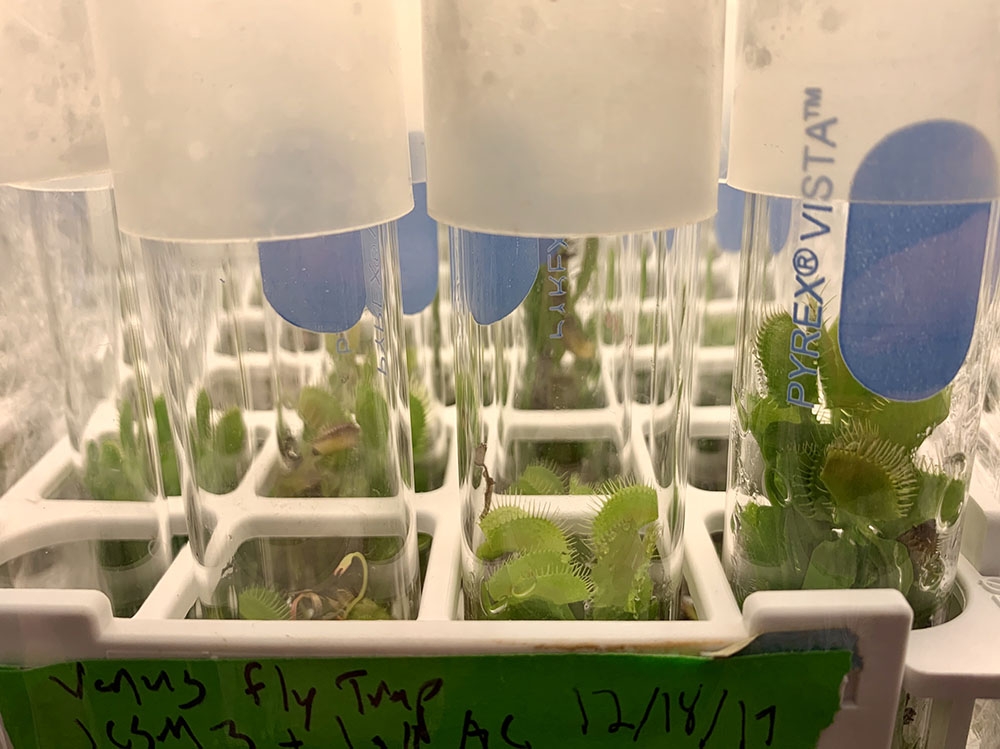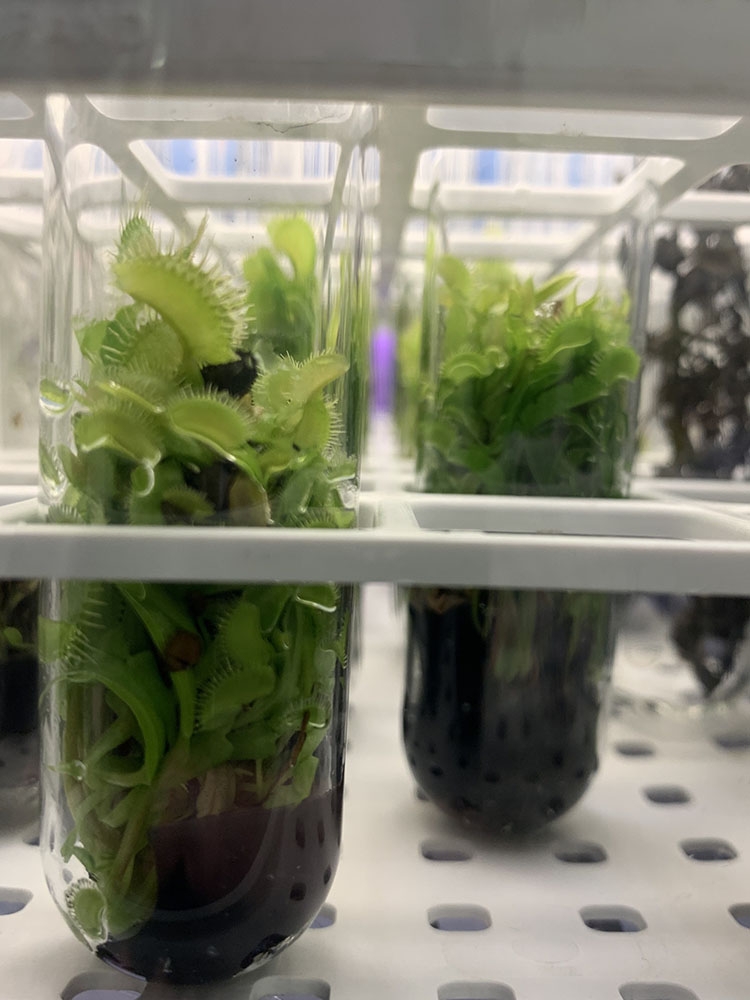Hungry, Hungry Houseplants
Few plants have garnered the interest of the home horticulturist as much as the charismatic Venus flytrap (Dionaea muscipula). We horticulturists here at Denver Botanic Gardens are no exception, and that is one reason why we have these hungry, hungry houseplants growing in our tissue culture lab. If you have never seen a Venus flytrap in person, you should come see them at the Gardens, where they are on display in our Orangery with other carnivorous plants.
Did you know that the Venus flytrap is native to the United States? They grow in the low nutrient, wet bogs of North and South Carolina in low oxygen muck. While they still photosynthesize and absorb water and nutrients from the soil, they supplement their nutrition with carnivory. The traps on these plants are actually modified leaves that have small hairs inside, and when two or more are tripped in succession (like when a fly lands on them), the traps quickly shut. If the trap successfully captures an insect, it will begin to dissolve and digest it while absorbing the nutrients. This process can take anywhere from five to 12 days depending on the size of the insect, and when completed the trap will open again. Each leaf trap can open and close a handful of times.
Unfortunately, the popularity and interest in this plant has led to the over-collection of plants from the wild. In order to meet the demand for these plants while protecting the wild populations, growing these plants in tissue culture has become the preferred method of production. In tissue culture, plants are grown on a low nutrient medium, which mimics the low nutrient soil they naturally prefer. Though low, it contains all the macro- and micronutrients, vitamins and sugars the plants need to grow and develop. The medium also contains activated charcoal, which gives it a black color. The Venus flytraps love this medium and will grow in test tubes for up to six months as happy as can be. These plants grow through horizontal rhizomes along the surface of the ground or medium and can be split those into three or four parts that will all continue to grow over the year. It takes about two months after these have been cut for them to regrow into very healthy and happy plants that are ready to be taken to the greenhouse. The Venus flytraps require about two additional months in the greenhouse to adjust back to being outside of test tubes before they are ready to go anywhere else.
At any given time, we have approximately 300 plants in the tissue culture lab. This means we can provide plants to our Education Department for classes and demonstrations; to our water garden expert, Tamara Kilbane, for interactive education experiences on SCFD Free Days; and as part of the display in the Orangery. Having these plants on-hand allows us to continue to connect people and plants in many ways here at Denver Botanic Gardens.
Gallery


Add new comment